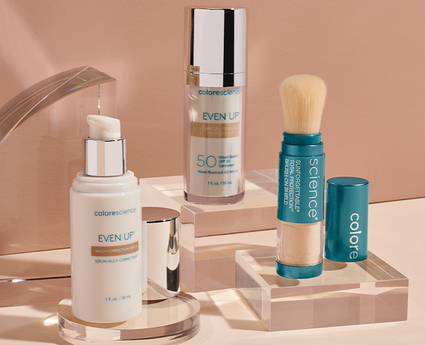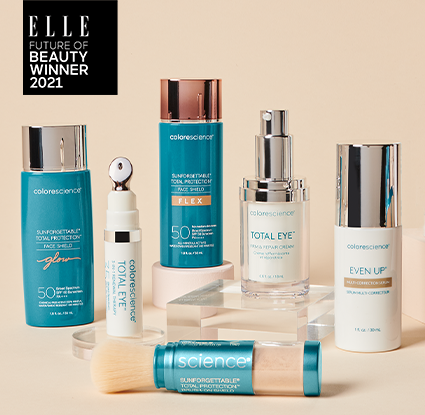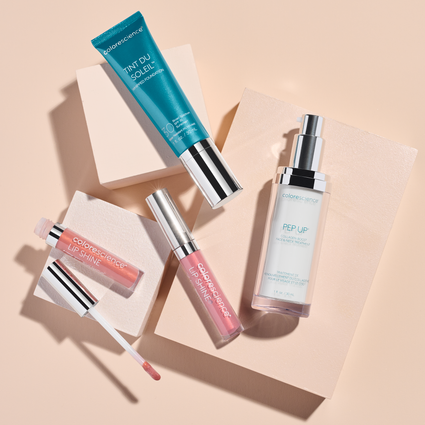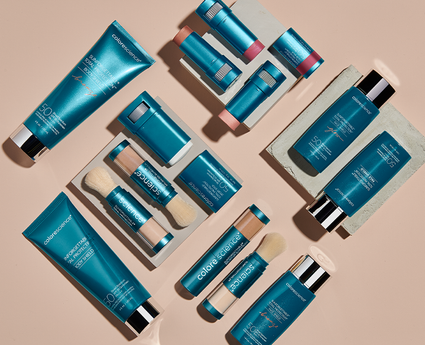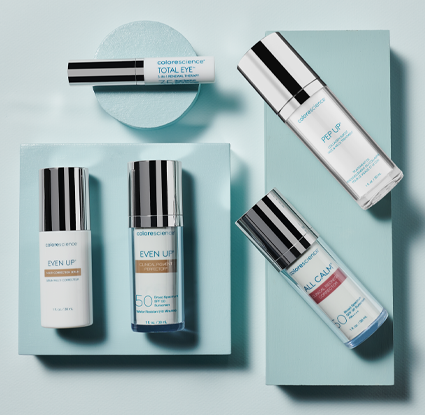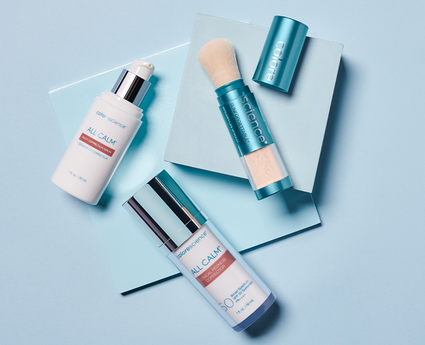What Causes Wrinkles?

There’s no getting around it – skin is bound to age. While some may accept this with grace, most try to prevent the onslaught of aging. We all know those telltale signs: wrinkles, fine lines, dark spots, pigmentation. These indications of age are particularly bothersome when they come prematurely, causing us to look older than we act and feel. Although we can’t freeze time, we can slow down the clock.
Aging can’t be stopped, its physical side effects can be delayed. In order to understand how to prevent the signs of age, you first need to learn what causes wrinkles. Understanding the science behind wrinkles will make you better equipped to avoid their formation. First, let’s take a look at the structure of the skin.
The Three Layers of Skin
Human skin is composed of three layers: the epidermis, dermis, and subcutaneous tissue.
-
Epidermis:
The epidermis is the skin’s outer layer. It’s rich in keratin, which is provides roughness and water-resistance. It’s within this layer of skin that dead skin cells are shed and where melanin (a dark pigment) is found. The epidermis acts as a barrier for the underlying layers, providing a level of daily protection from the sun, and is the first line of defense in our body’s immune system. -
Dermis:
Beneath the epidermis lies the thick dermal layer. The dermis is composed of nerves, fats, blood vessels, elastin, and collagen fibers. Collagen – which occupies about 80% of the dermis – is a protein that accounts for the primary component of body’s connective tissue. Collagen provides the skin’s strength, whereas elastin (as its name implies) gives your skin its elastic quality and enables it to stretch back and forth. -
Subcutaneous Tissue:
The subcutaneous layer is composed of fat. It’s mostly responsible for keeping us warm and holding our internal organs in place.

The structural changes that take place within these three layers of skin are responsible for producing the visible signs of aging. There are two different processes that induce such changes and lead to wrinkles: intrinsic aging and extrinsic aging.
Intrinsic Aging
Intrinsic aging, also known as chronological aging, occurs over the span of your lifetime regardless of external factors. Intrinsic aging is a natural process, and although most bodies mature along a similar timeline, it varies from person to person based on heredity:
-
After age 20, our bodies produce 1% less collagen each year. As collagen and elastin fibers become thicker and looser, the skin becomes inelastic and brittle; the signs of the skin’s attempt to stretch back and forth turns into visible wrinkles. Also in our 20s, the exfoliation process decreases, causing dead skin cells to accumulate and stick together for longer periods of time.
-
In our 30s, the transfer of moisture between the dermis and epidermis slows and fat cells start to shrink, making the skin appear dull. As the body ages, the skin produces less sebum (oil). This causes the texture of the skin to become dry and for wrinkles to become more visible – which is why you might notice those Crow’s Feet around your eyes, since this area has very few sebaceous glands.
-
Collagen production stops at age 40, and wrinkles form as the fibers begin to break and stiffen. Skin cell turnover slows, and it becomes more difficult for the cells to regenerate themselves.
-
By age 50, we start losing the fat stored in the subcutaneous tissue, which makes the skin thinner. The loss of estrogen following menopause also contributes to thinness, and results in the skin becoming more easily damaged. A decline in blood vessels and decrease in circulation also works against our complexion.
All of these intrinsic factors contribute to wrinkles, sagging, and pigmentation issues. This aging process is very slow, and only contributes to a small percentage of wrinkles. Most wrinkling is due to the effects of extrinsic aging.
Extrinsic Aging
Ever wake up one morning to be greeted in the mirror with a wrinkle that you swear wasn’t there the night before? It was most likely due to extrinsic aging. This type of aging refers to environmental influences that lead to wrinkles, and they’re responsible for creating the most dramatic signs of age. Here are a few of the most common sources of extrinsic aging.
-
Repeated facial expressions and sleeping positions:
When you smile, creases form at the corners of your mouth as your lips pull up into your cheeks. Such repeated facial expressions can eventually form wrinkles known as expression lines. While everyone should be proud of their signs of smiling, other expression lines are not so welcome. Be sure to be careful every time you rub those sleepy eyes in the morning, and learn more about what to do if you have puffy dark eyes. Also, try to switch up which side of your face you sleep on to reduce the risk of deepened creases along the side of your nose. -
Smoking:
Stop smoking! It’s bad for your health and it’s what causes wrinkles on your face. Each time you take a drag from a cigarette, you’re pulling on what’s called your Purse String muscles. This repeated motion has the same effect as expression lines: premature wrinkles which betray your age. Furthermore, the nicotine found in cigarettes causes a narrowing of the blood cells within the outer most layer of the epidermis. If blood flow decreases, the skin becomes deprived of oxygen and vital nutrients, such as vitamin A. As a result, the skin begins to sag and wrinkle prematurely. -
Pollution:
Free radicals (or harmful, electron-hungry molecules) cause damage when they pull electrons from other molecules in our body. This action alters chemical structures and biological functioning, thereby accelerating the aging process, as seen on our skin in the form of wrinkles. Pollution in the environment is a major source of free radical exposure, and although antioxidant enzymes can help protect against free radicals, their damage will occur regardless. Protect your face and skin from daily damage with our Total Protection collection. -
Exposure to the sun:
Photoaging, or changes that occur due to the sun, is by far the biggest culprit in the causation of wrinkles, and can be reduced though regular use of safe, toxin-free sunscreens. The National Center for Biotechnology Information asserts that photoaging is responsible for 80 percent of wrinkles. When UVA rays penetrate deep into the skin’s dermal layer, it causes the breakdowns of our much-needed collagen and elastin. As these essential proteins break down, the skin begins to sag and wrinkle. Wrinkles are just one effect stemming from sun damage; photoaging also causes sun spots, rough texture, pigmentation problems, and can even lead to the development of deadly skin cancer.
Until we find the fountain of youth, we can’t stop aging – but we can control it. If you know the causes of wrinkles, you can begin to avoid their sources. To keep your complexion looking youthful and radiant, follow a few simple steps.

-
Wear sunscreen every day:
We cannot stress the harm sun poses to your delicate skin enough. It’s imperative that you wear a broad-spectrum SPF sunscreen. Every. Single. Day. It doesn’t matter how long you plan on being outside; its harmful rays can do their damage in a matter of minutes. Remember that the majority of UV rays are able to penetrate clouds, so wear your SPF regardless of temperature and weather conditions. Furthermore, UVA rays have the capability to penetrate glass and affect you while indoors, meaning sunscreen should be a part of your daily skin care routine— especially if you’re concerned about what causes face wrinkles. -
Keep your skin hydrated:
To counteract the loss of moisture associated with intrinsic aging, be sure to pick up a high-quality moisturizer and consider using a daily hydrating mist to keep your face moisturized throughout the day. Dry skin is among leading wrinkles causes; it doesn’t matter if you’re dry due to sun damage, low humidity, or even too much coffee. Wrinkles display themselves more easily when the skin is dry and brittle, so keep your complexion soft, supple, and strong with a daily moisturizer and makeup for dry skin. -
Drink more water:
It’s equally important to hydrate yourself from the inside by drinking at least 8 cups of water per day. Our bodies are composed mostly of water, and keeping it abundantly supplied with H2O has multifarious health benefits. Drinking more water is one of the best tips for a youthful complexion, and because it flushes out so many toxins and free radicals, it’s one of the best means to avoid what causes facial wrinkles. -
Get plenty of sleep:
When your body rests, the body increases blood flow to the skin, helping assist in the regeneration of skin cells. Get plenty of beauty rest every night, and never fall asleep without taking your makeup off. While we’re at it, try to sleep on your back to make sure those sleep lines don’t become permanently etched into your face and cause wrinkles.
Now that you know what causes wrinkles, you’re better able to prevent their arrival. Set yourself up for success and do your best to proactively fight the causes of wrinkles. Trying to correct damage from years of smoking and extensive sun exposure is a much more difficult path to follow; begin implementing these tips today to make sure your face is free of fine lines.

